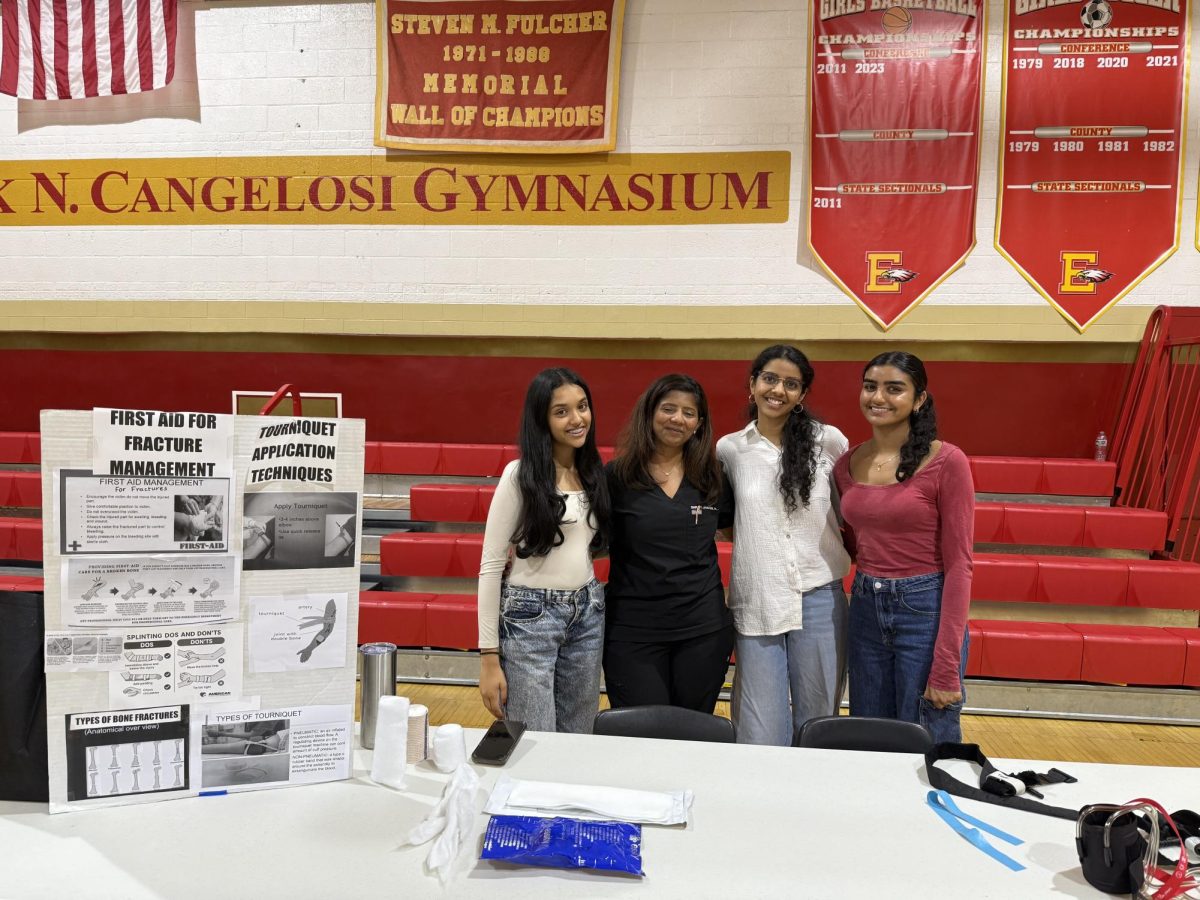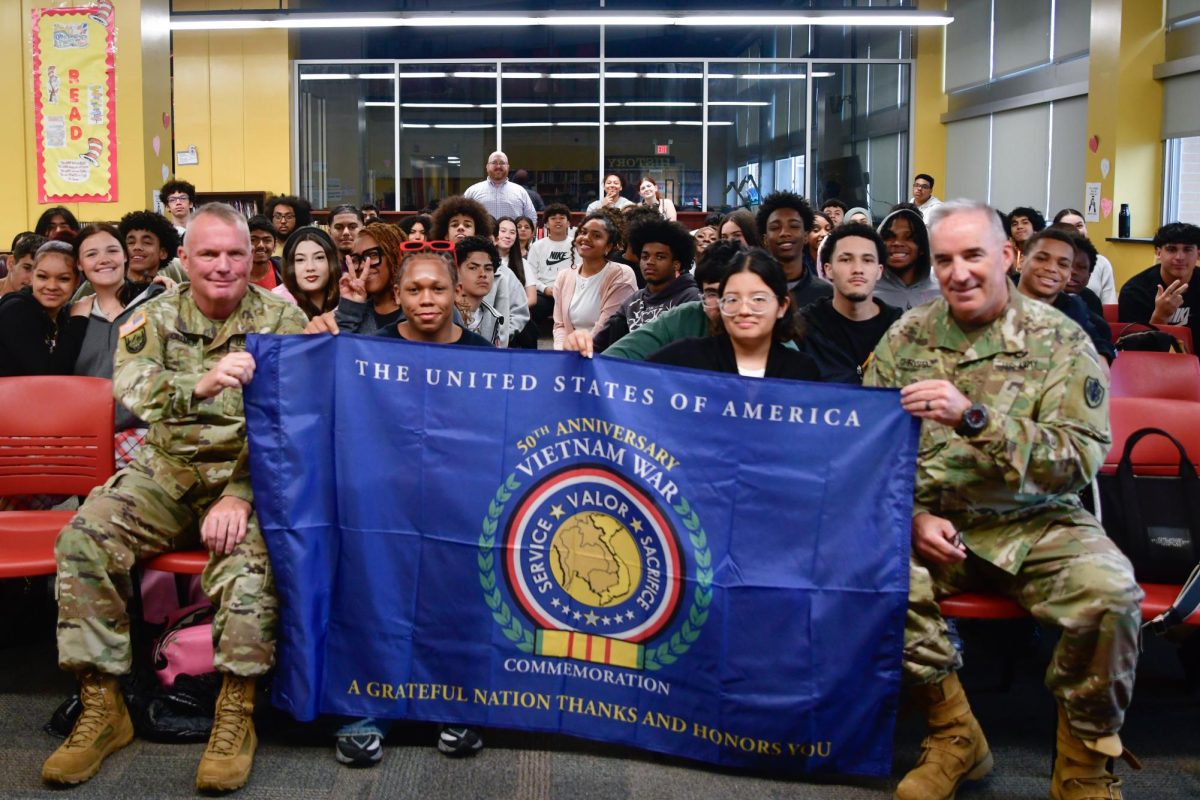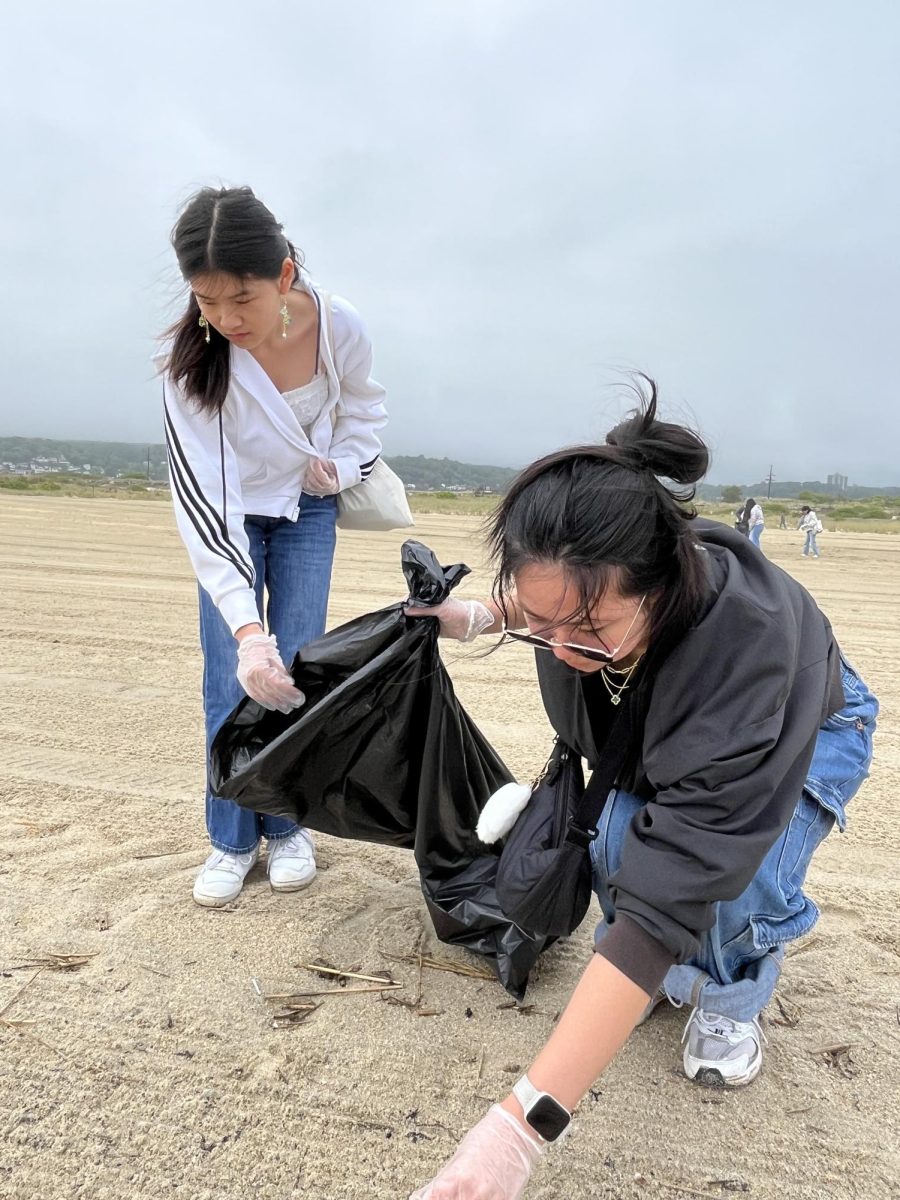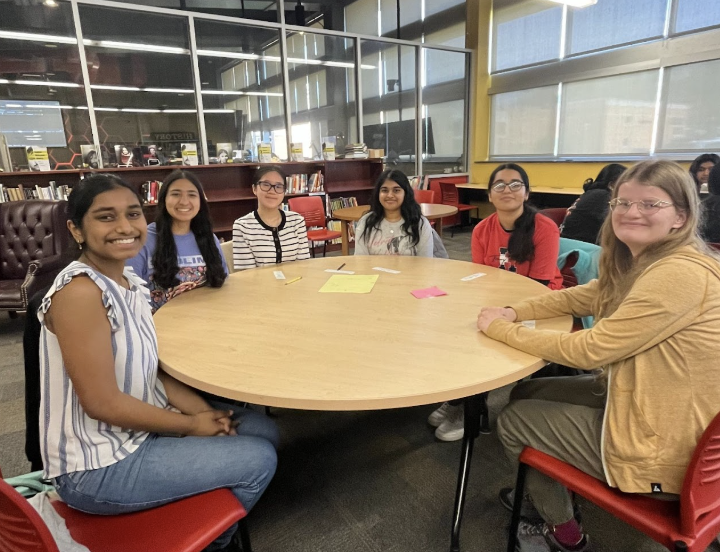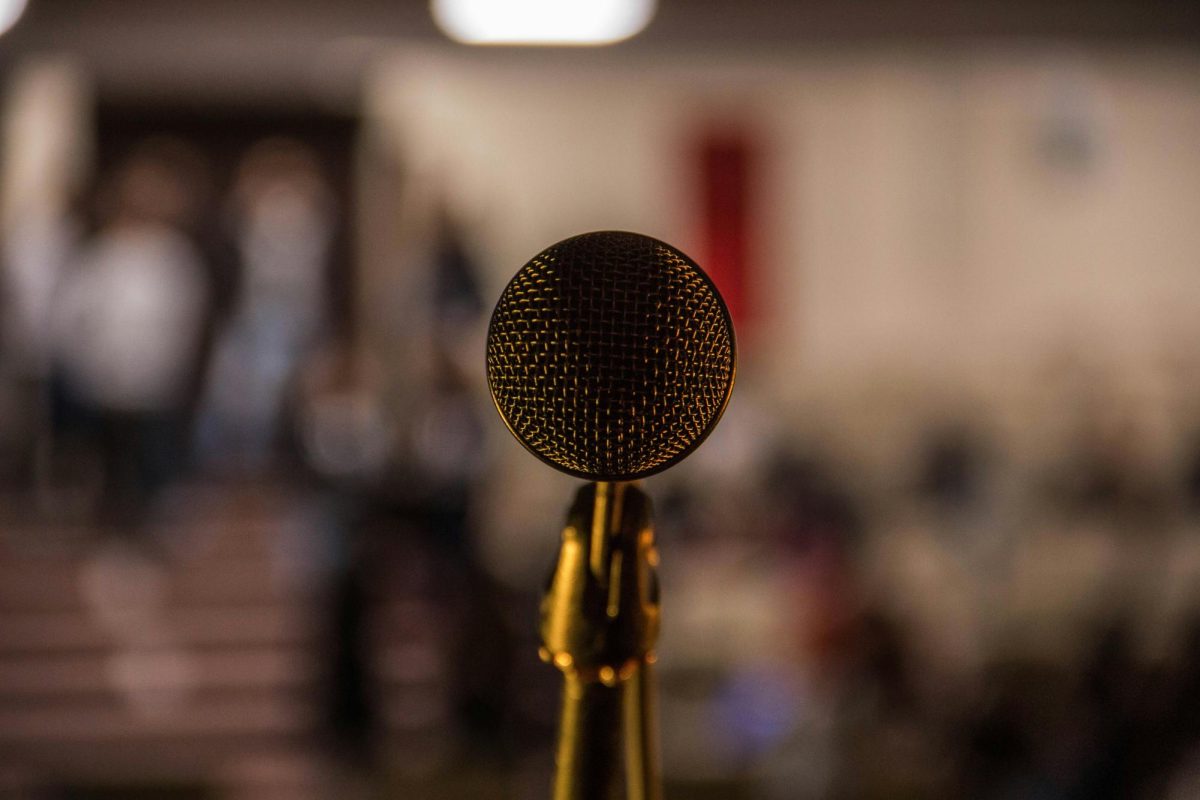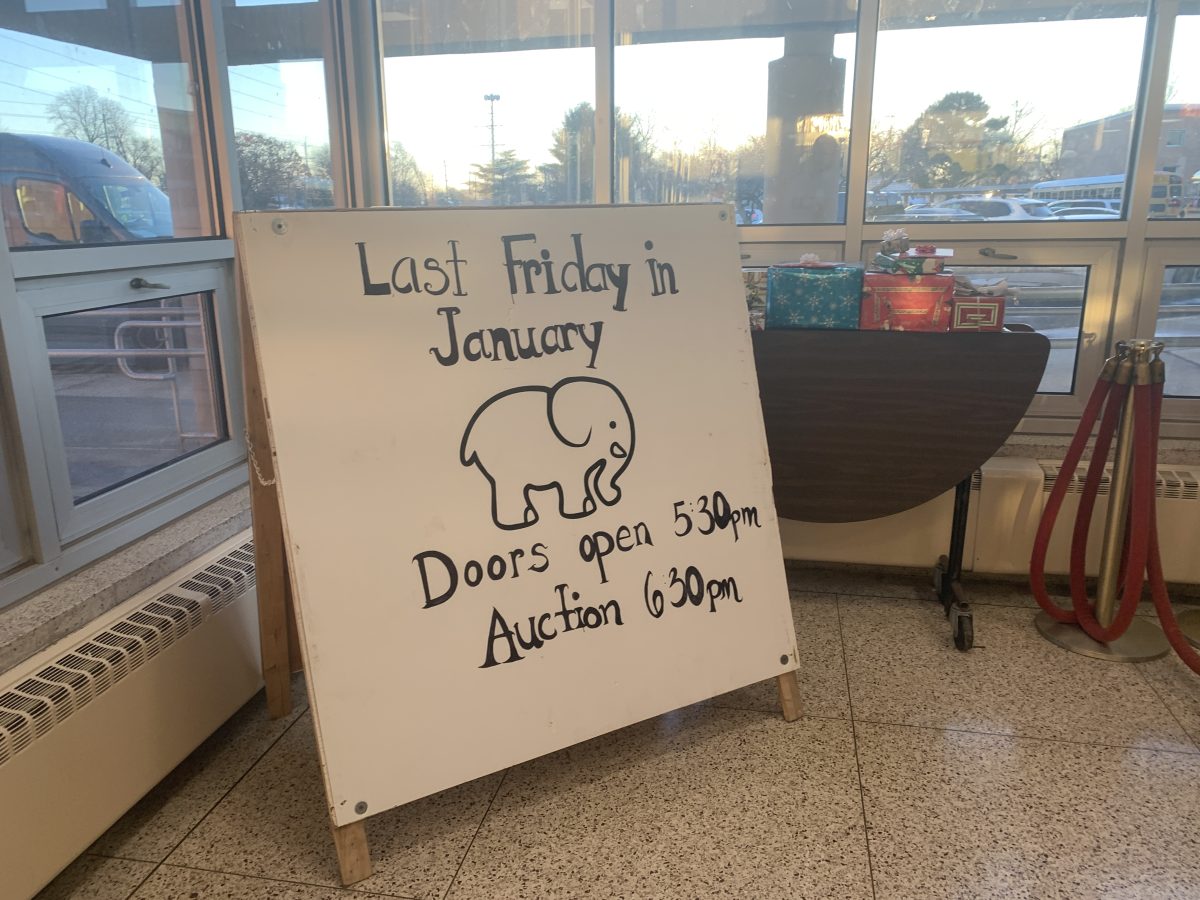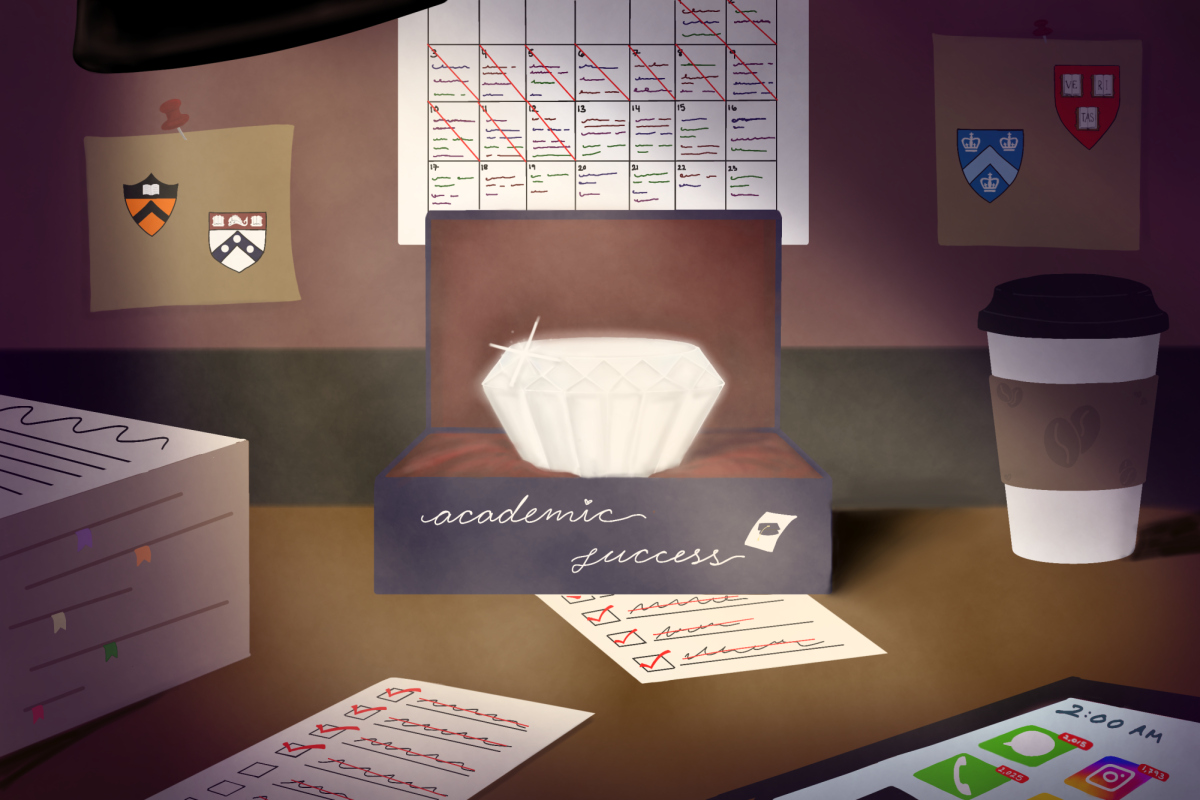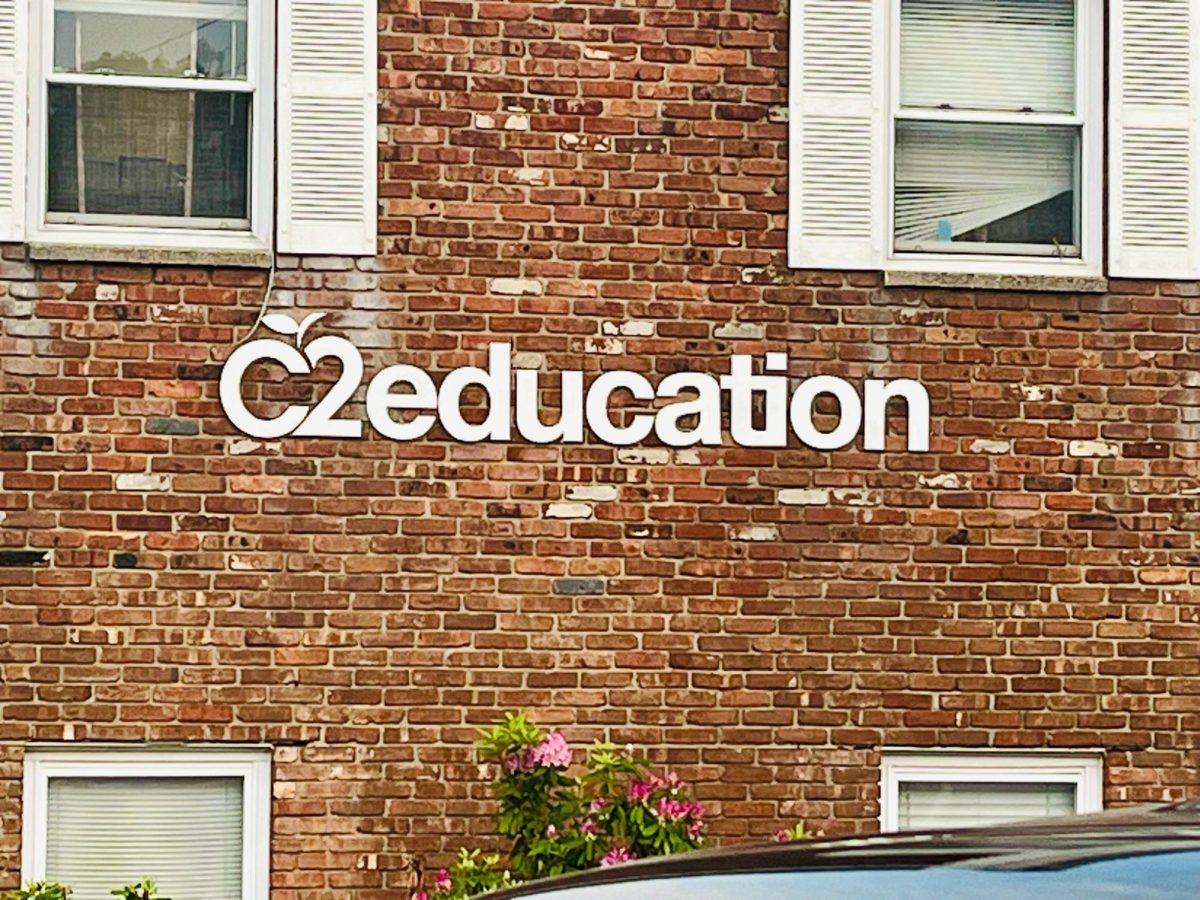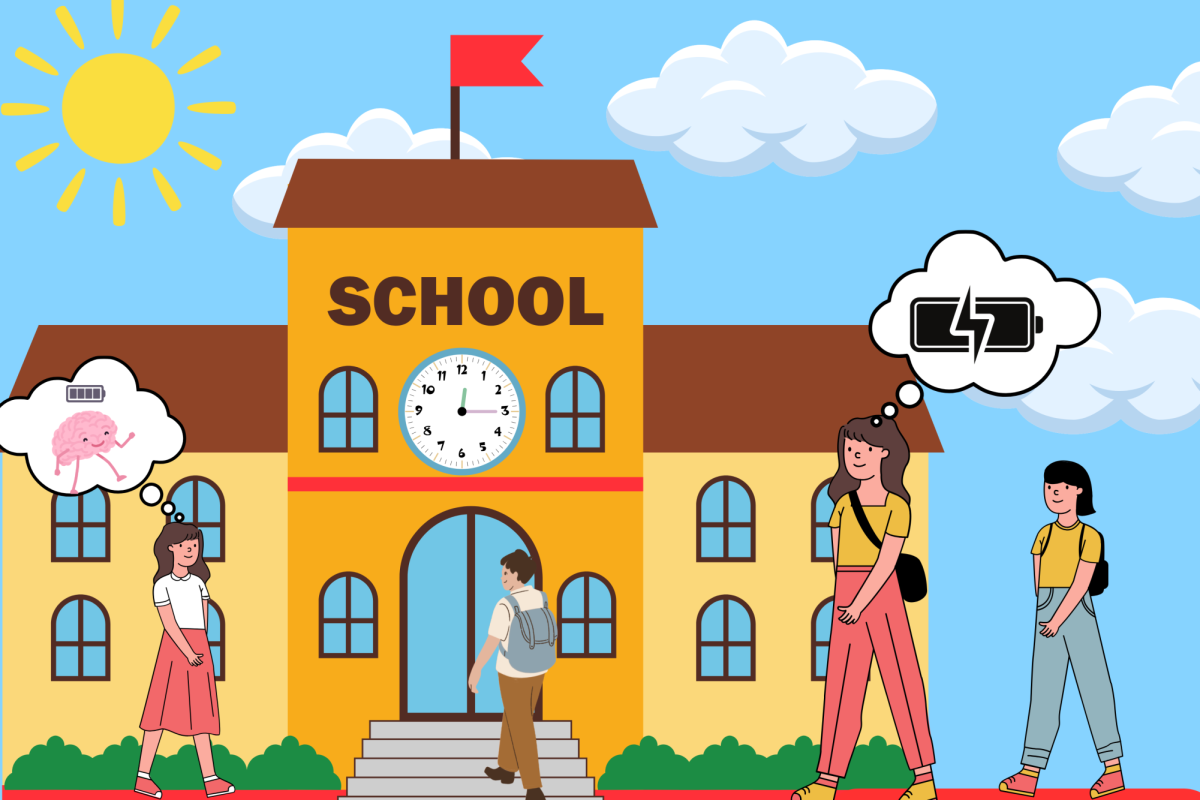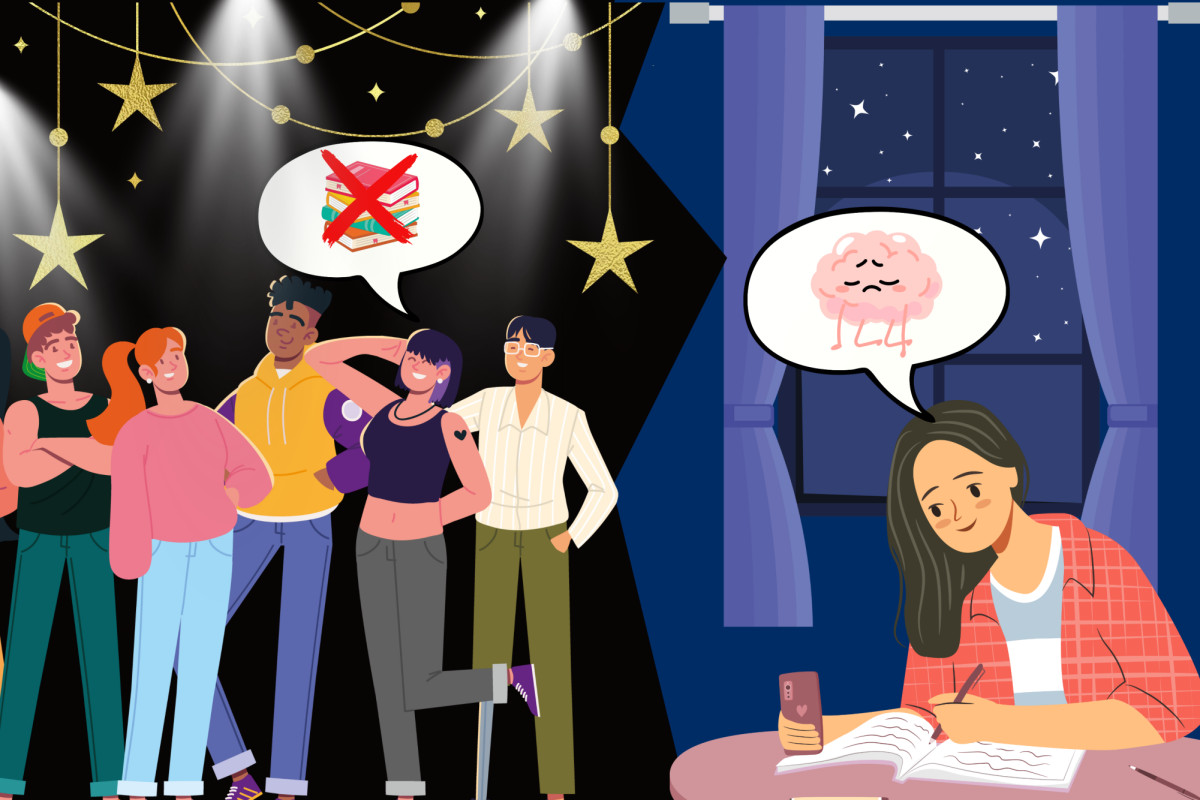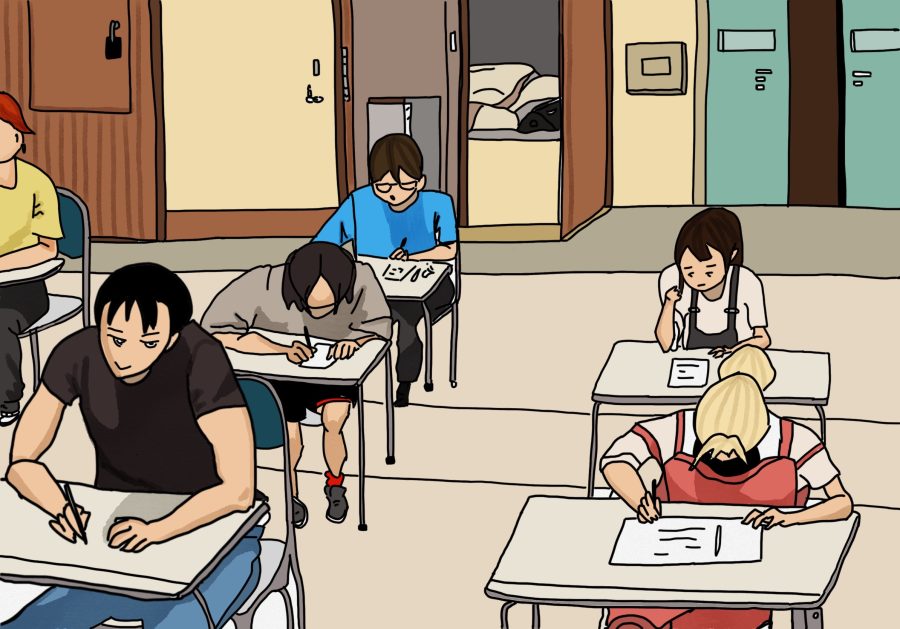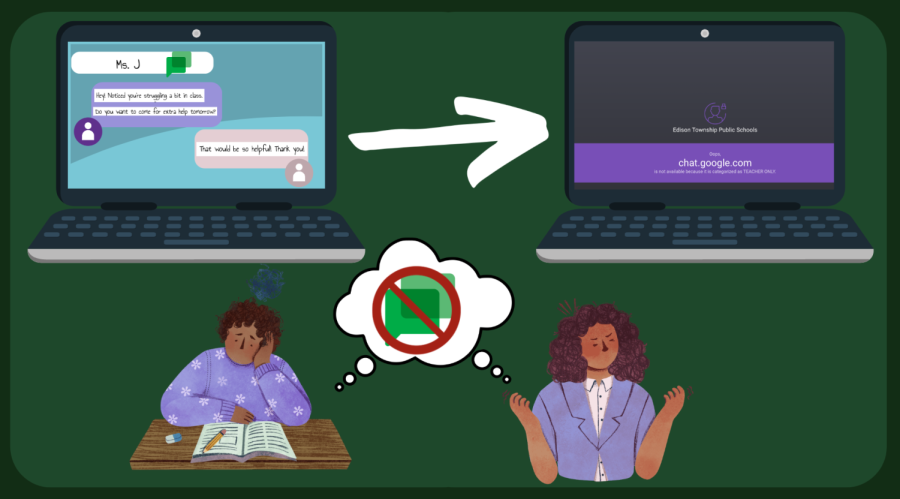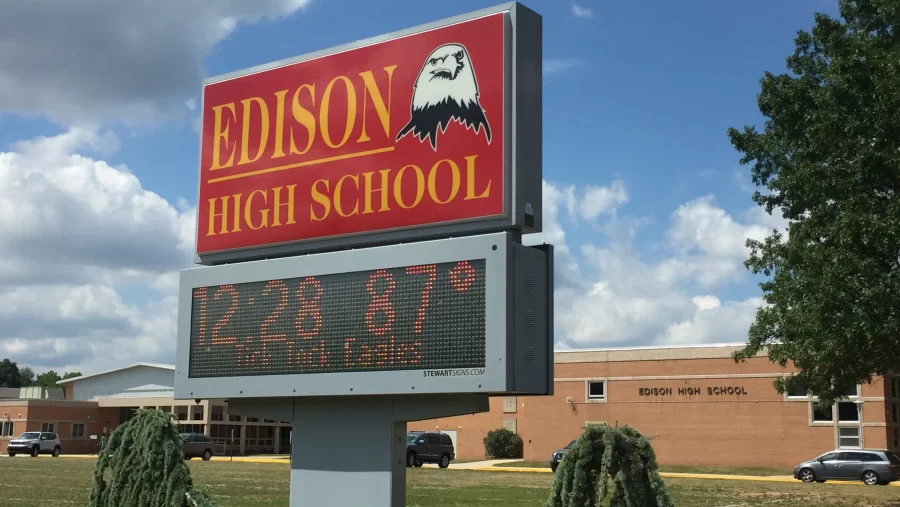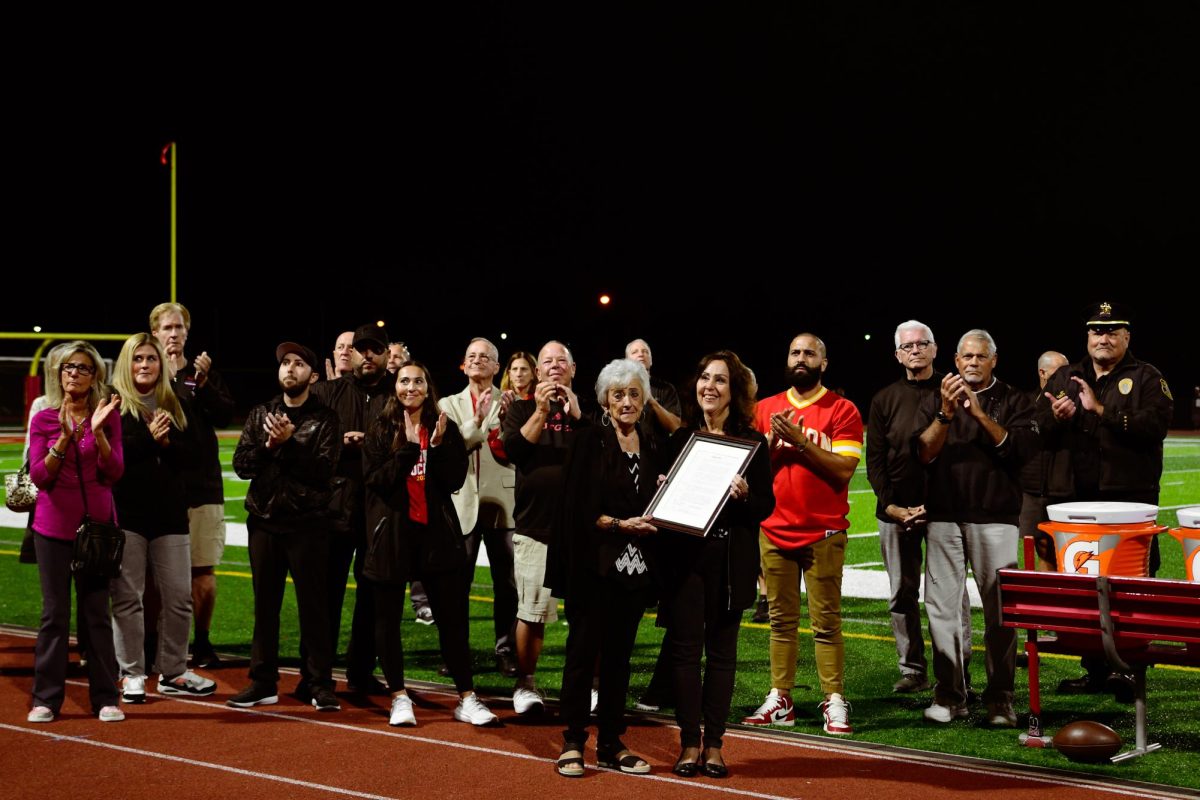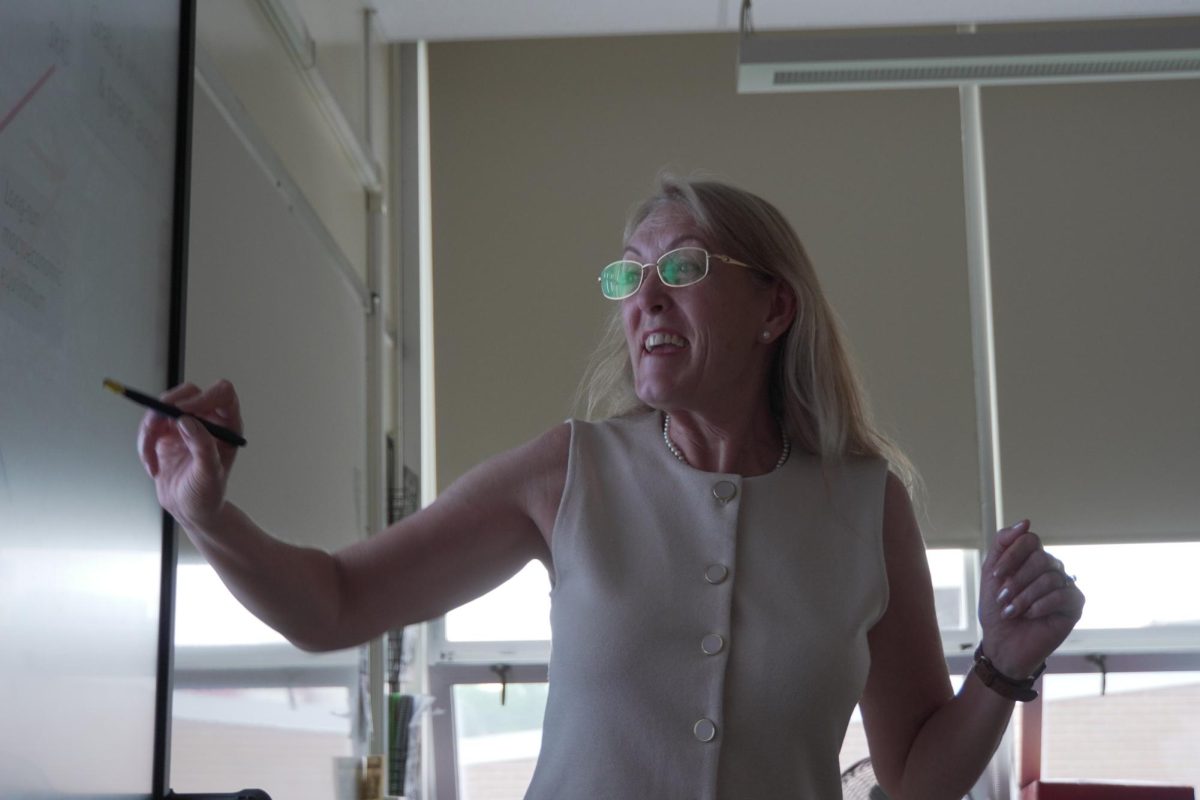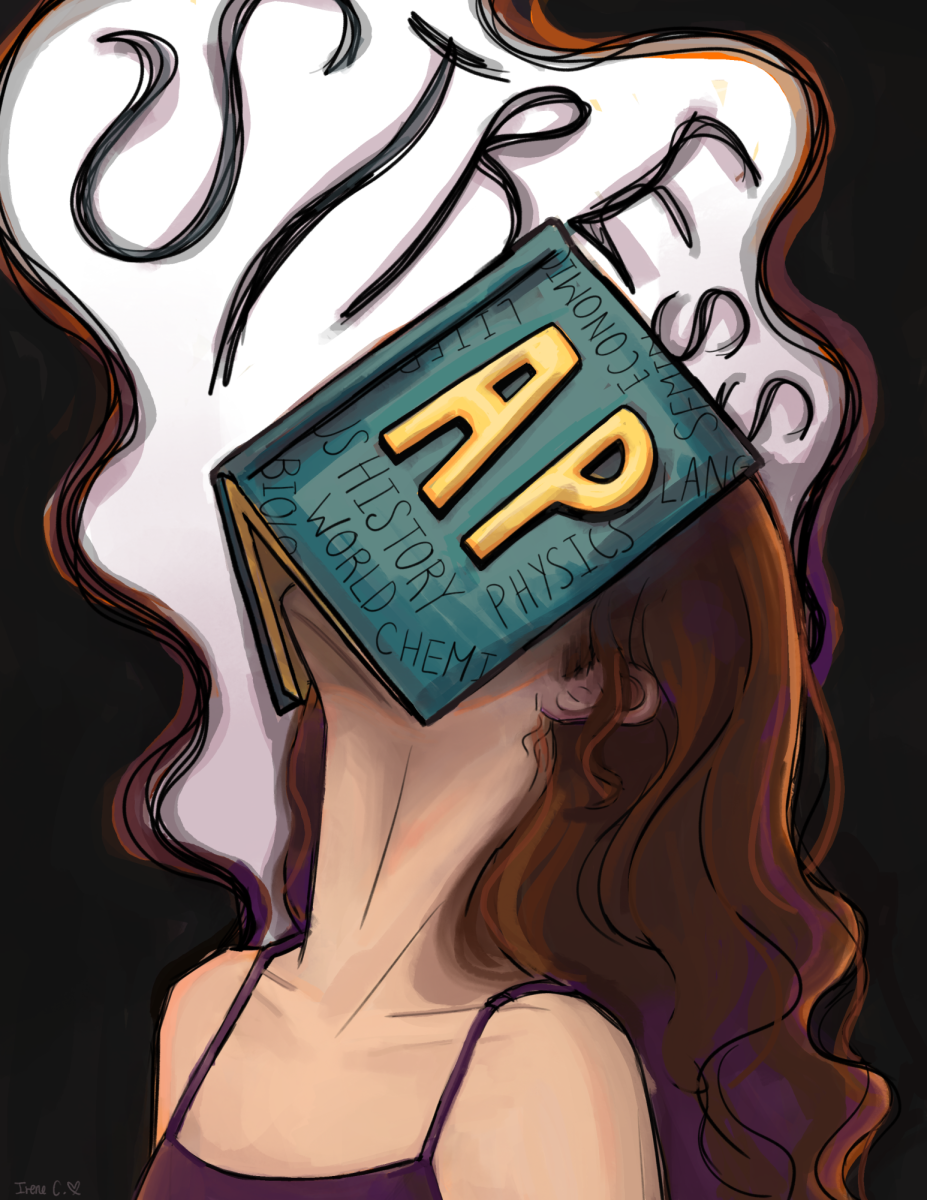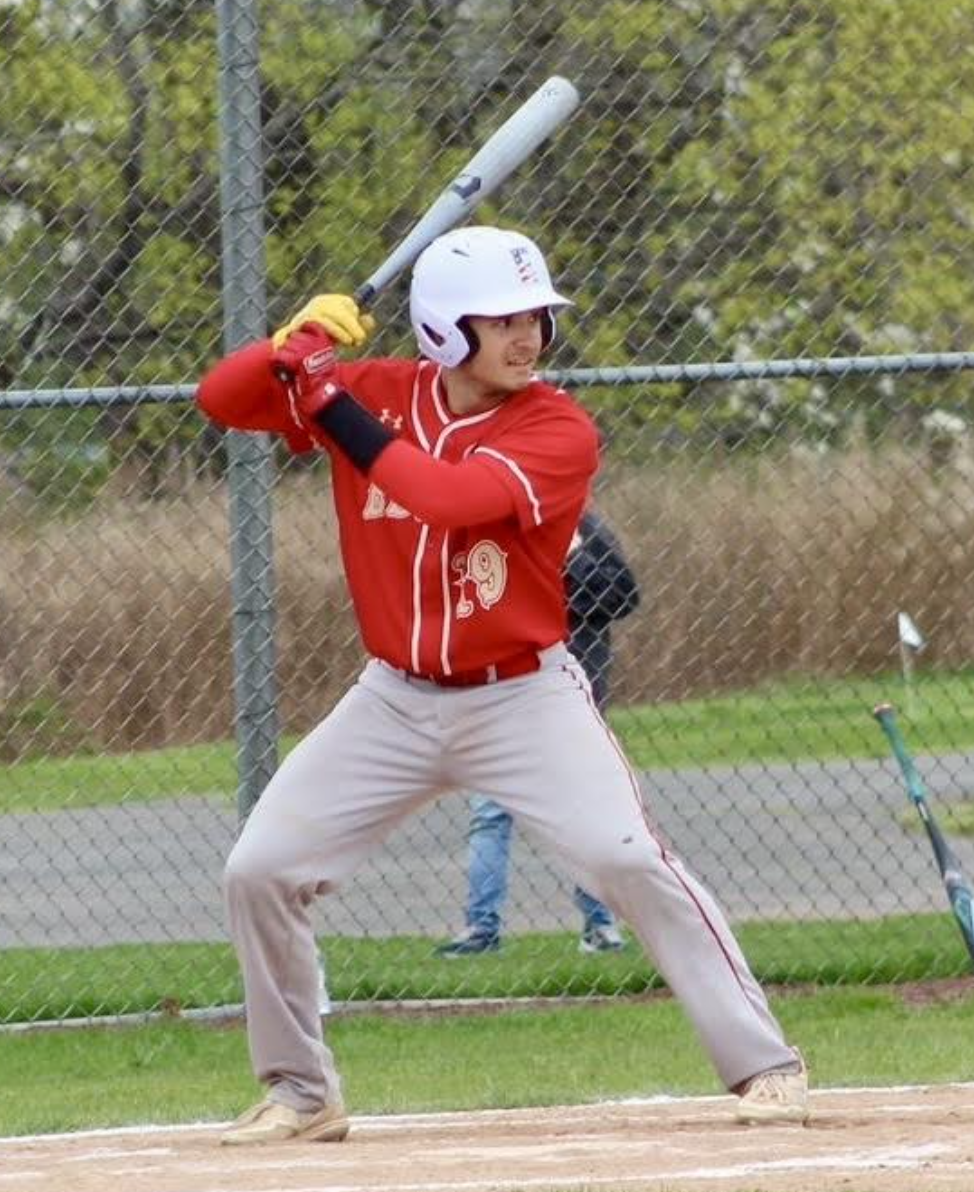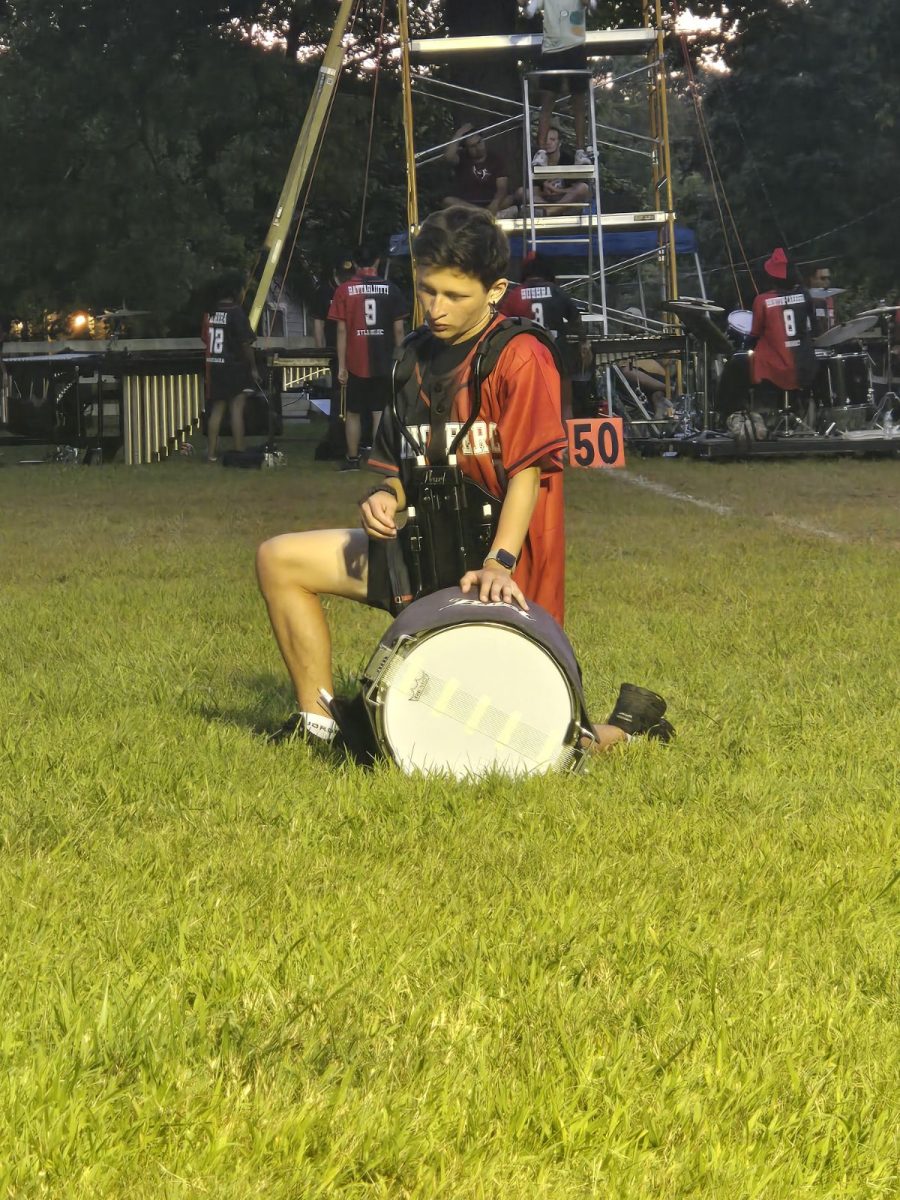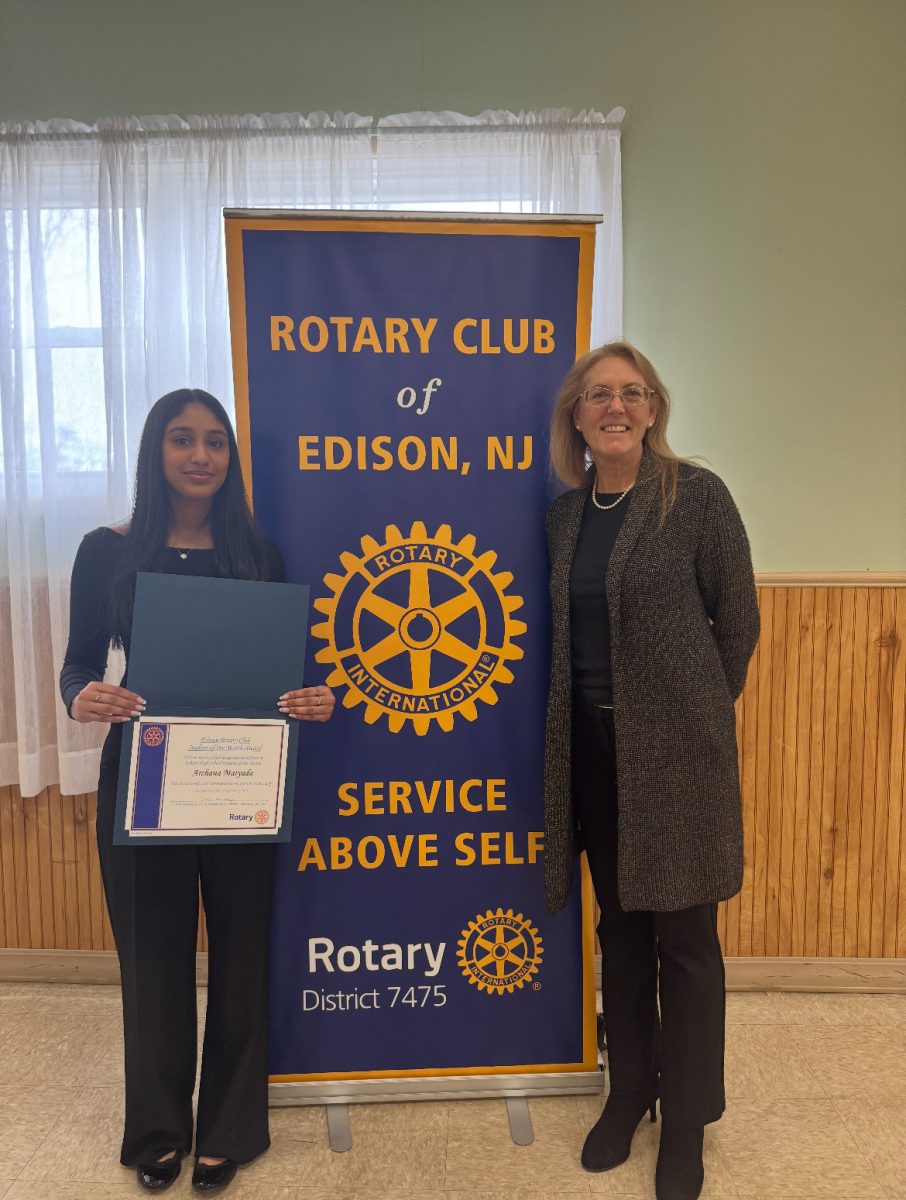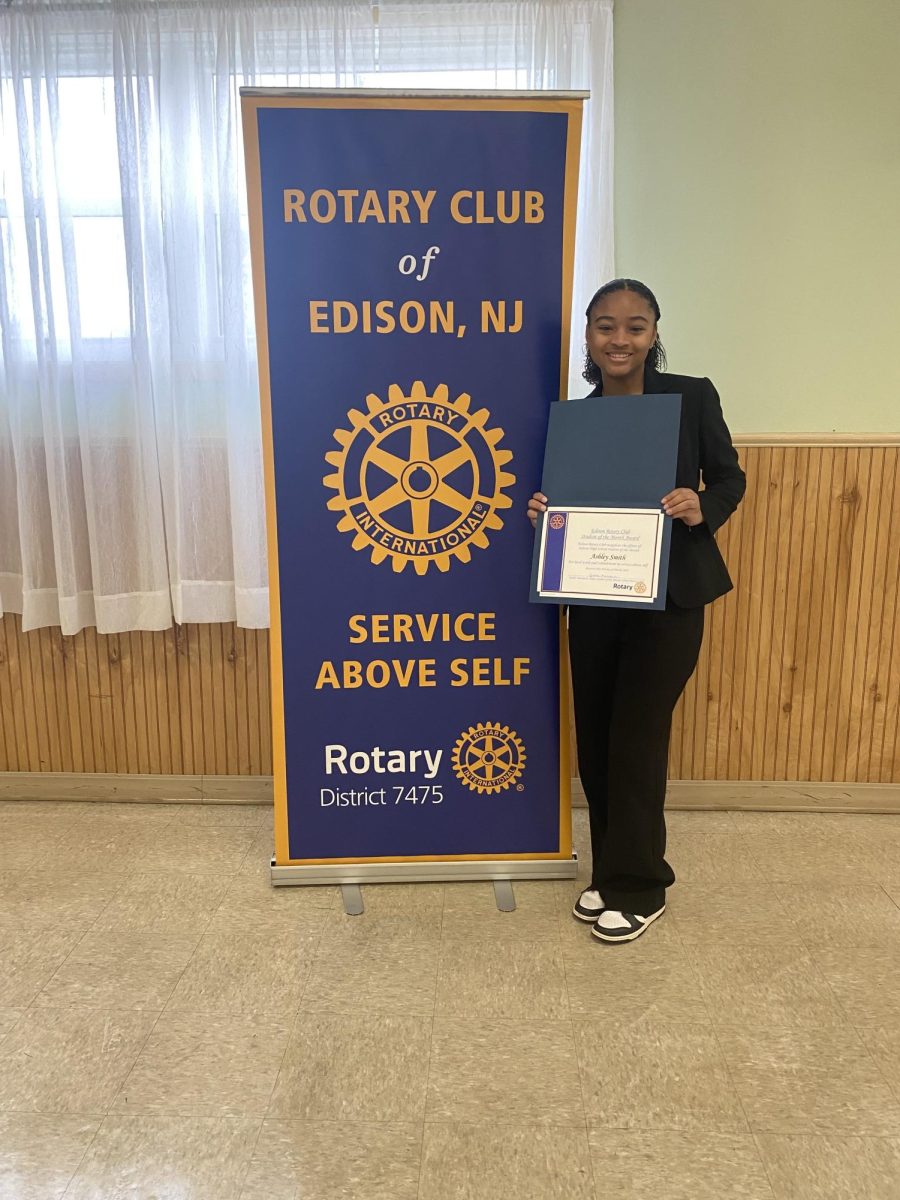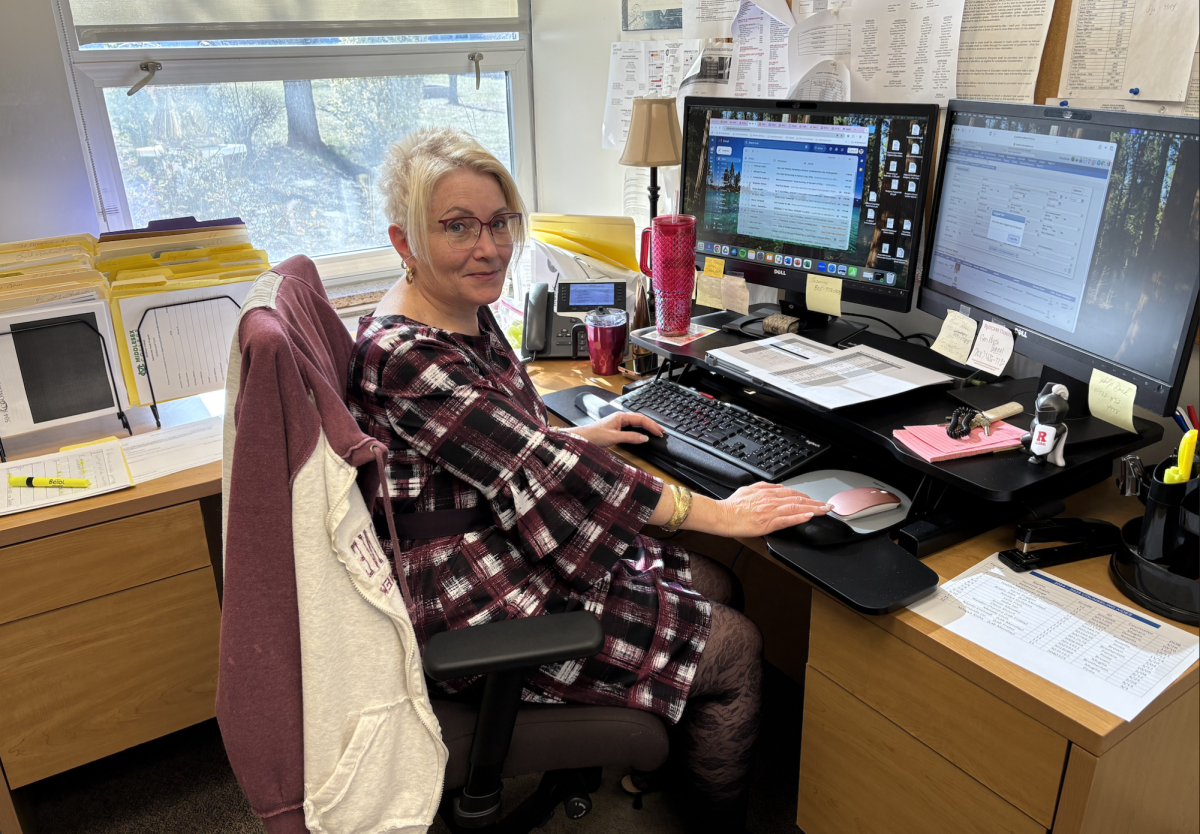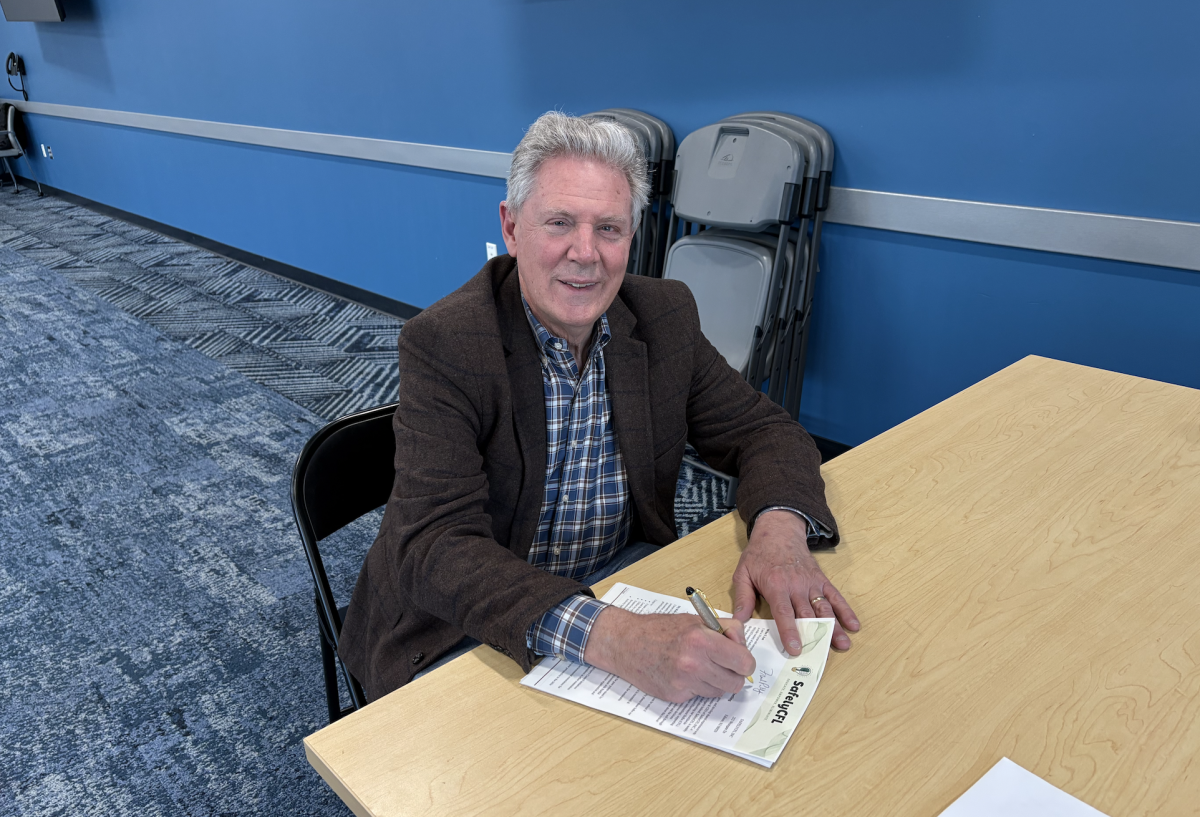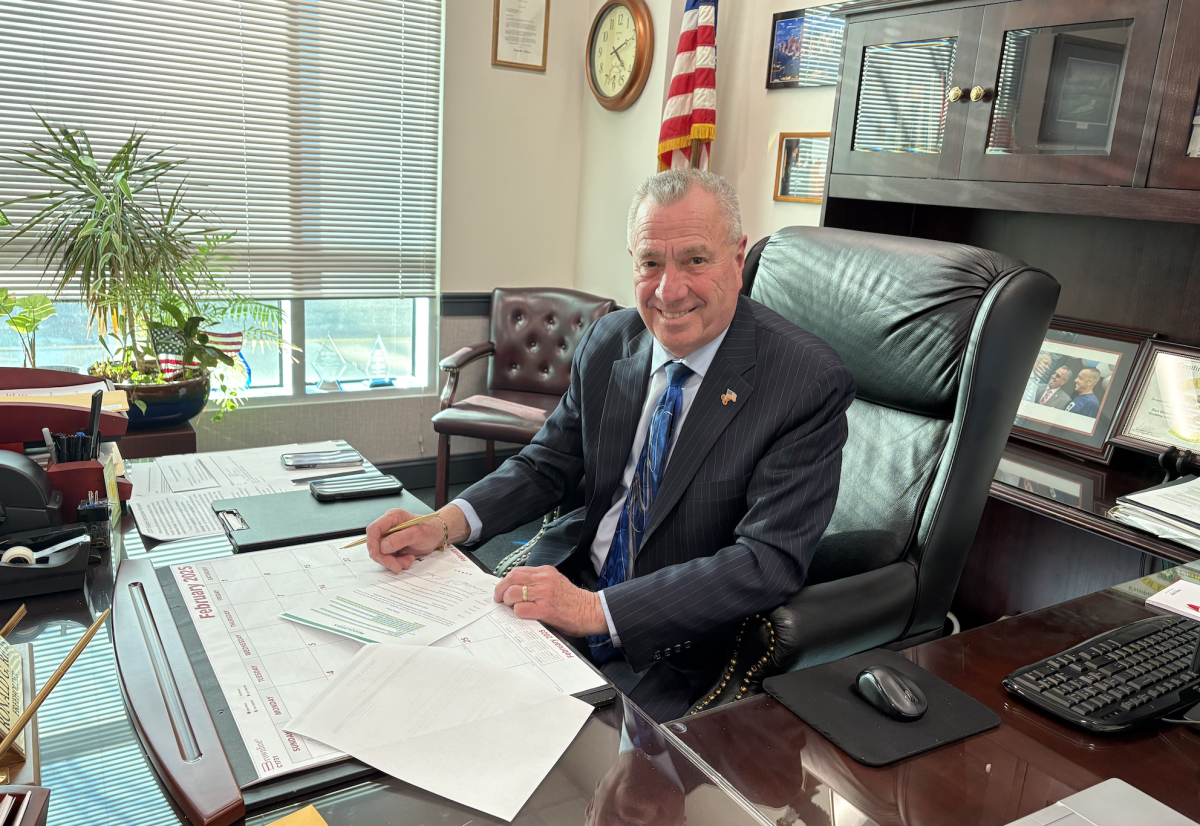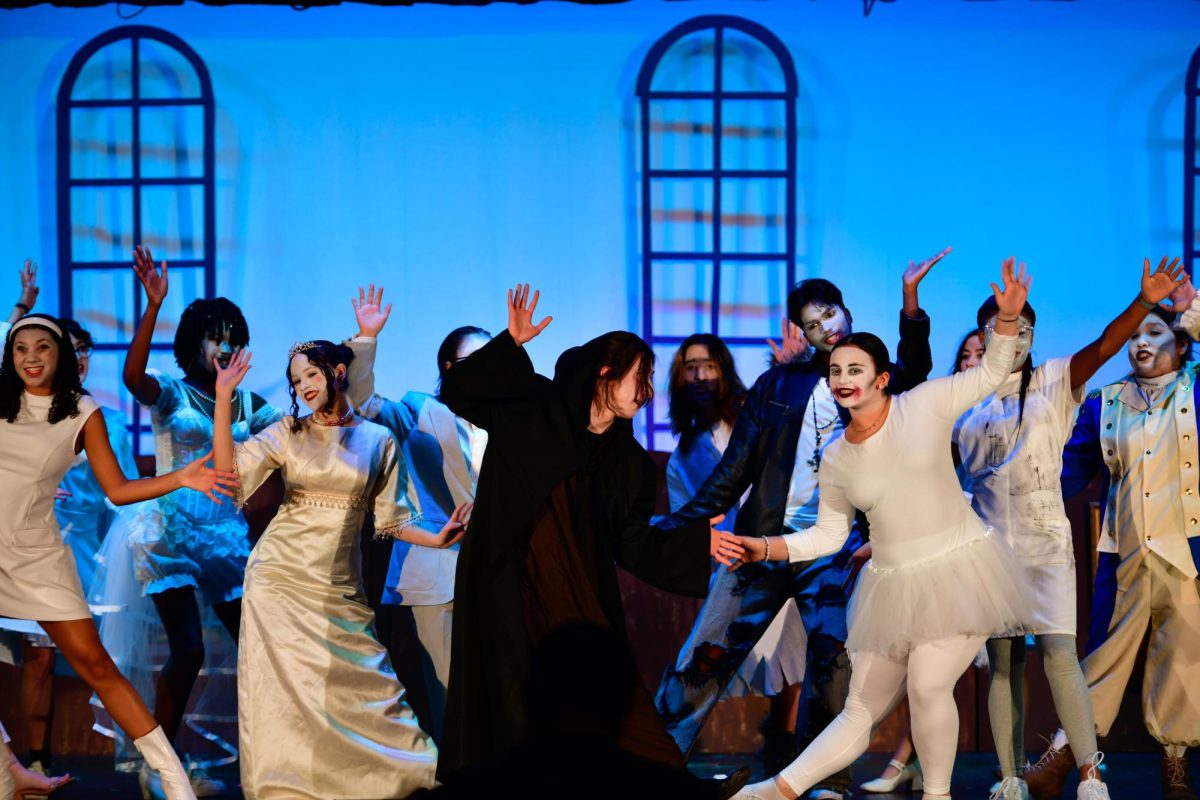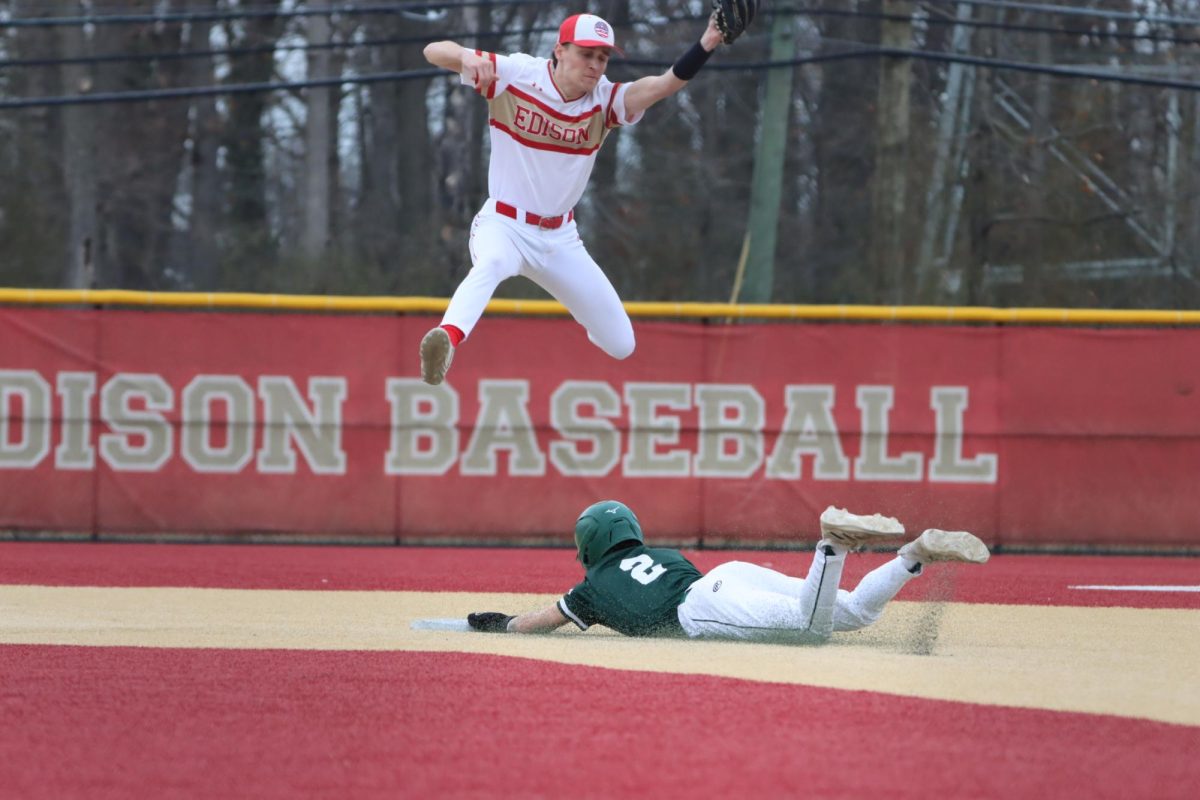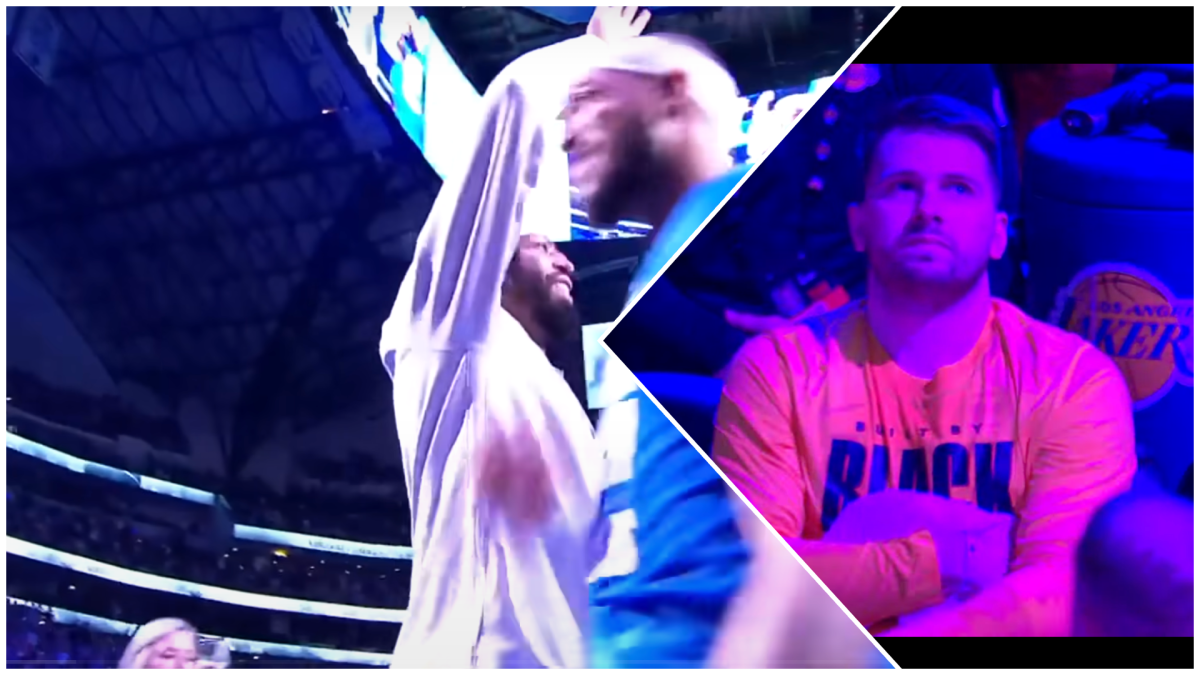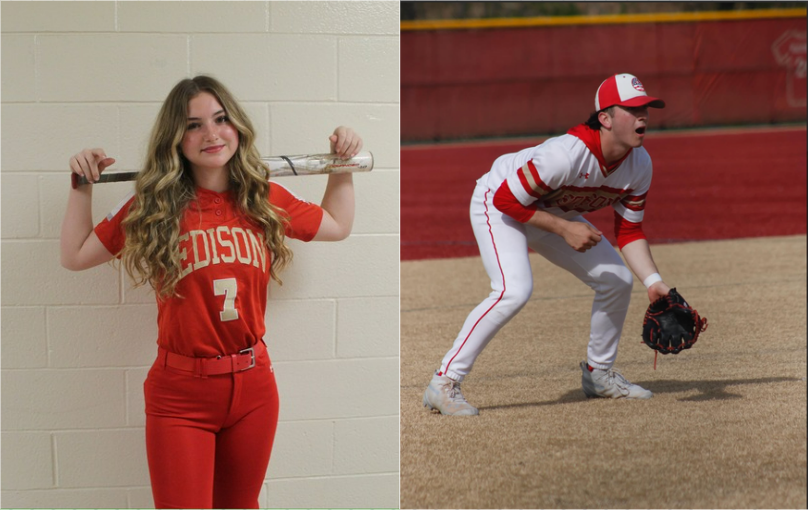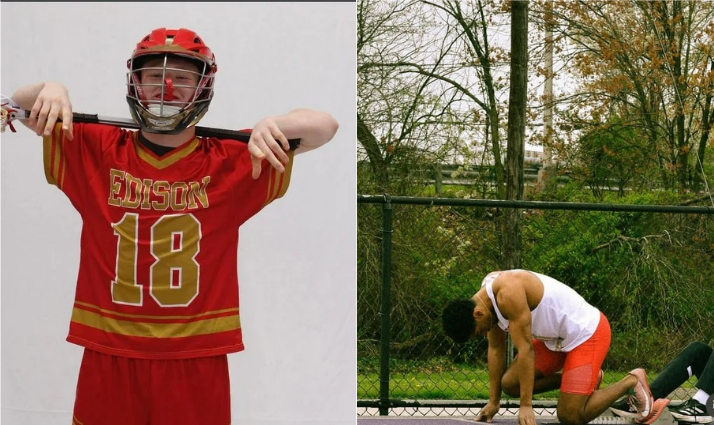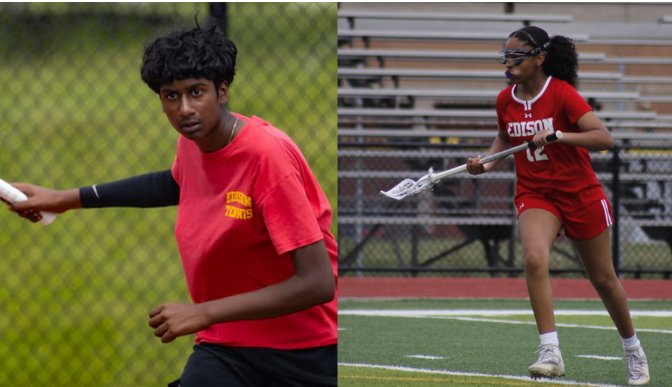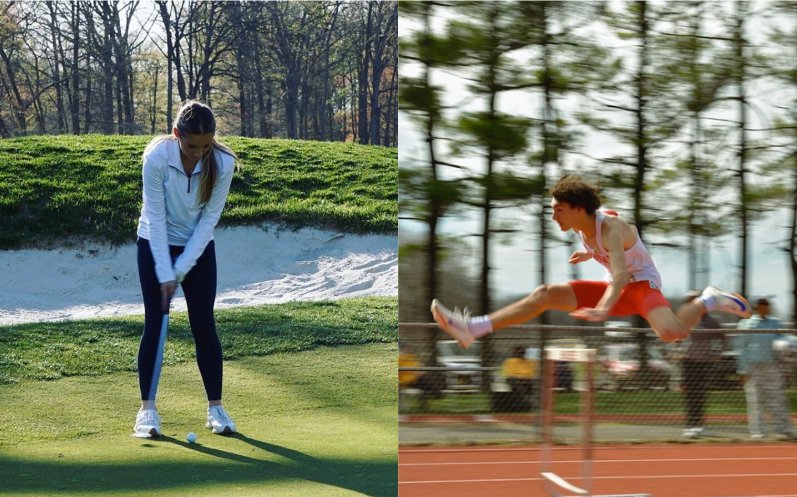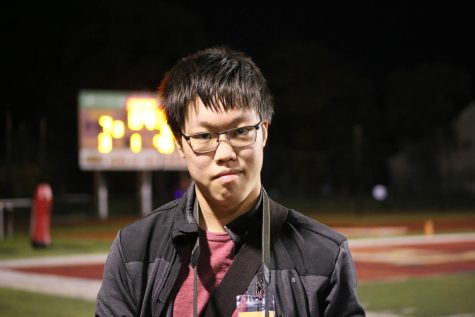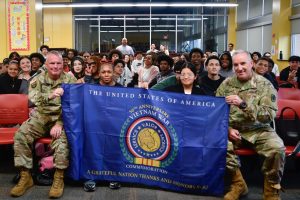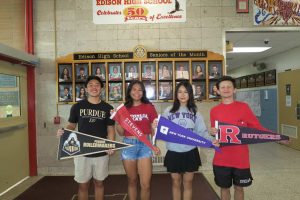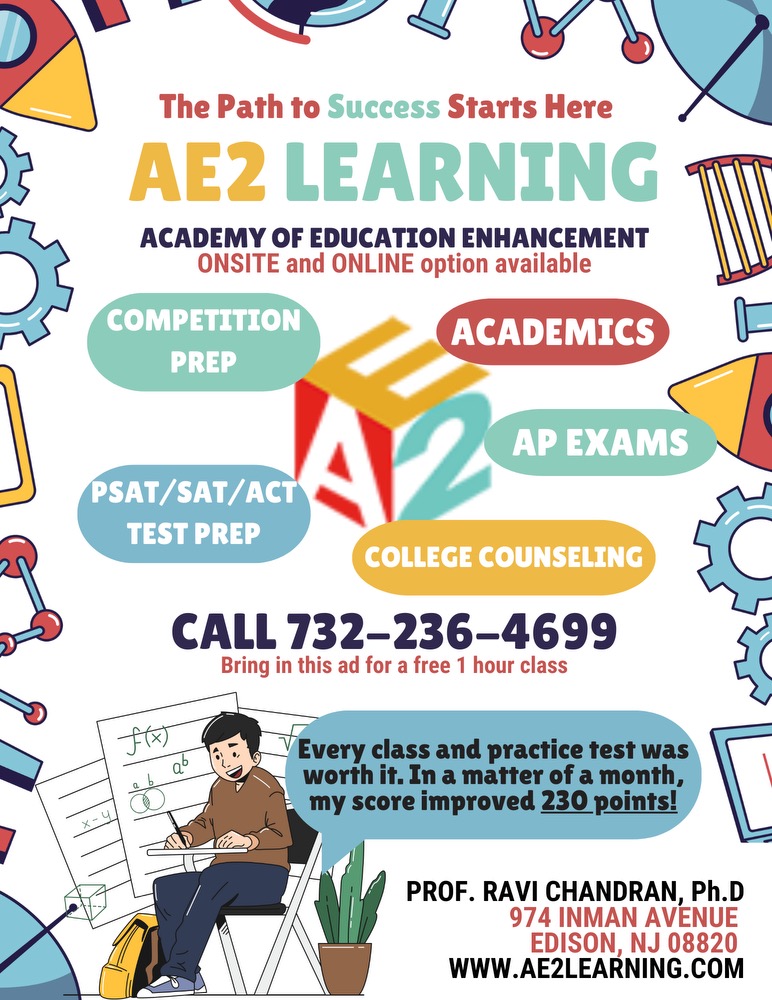Return from Winter Break Brings Mixed Emotions
A student not properly wearing their mask, risking other students’ health.
January 21, 2022
In a move inconsistent with school districts across New Jersey, Edison Township Public Schools has continued in-person instruction following winter break. As one of the ten school districts in Middlesex County keeping students in-person, the district has created a system for quarantined students to learn remotely, while all other students must attend in-person school.
Many students have expressed concerns about attending in-person, questioning why Edison Township Public Schools remained in-person while other districts in New Jersey anticipated a temporary switch to remote learning. For the week of January 3, the district reported 431 COVID-19 cases districtwide, with 72 at Edison High. For the week of January 10, the district reported 218 COVID-19 cases districtwide, with 26 at Edison High.
Reasons for other districts going remote include serious staff shortages and high numbers of COVID-19 cases.
“School districts all around ours have chosen the remote option, but Edison remains in person. It simply doesn’t make sense,” said Arnav Chinchankar ‘22.
At a Board of Education meeting on Monday, January 3, Board Member Jerry Shi asked Superintendent Dr. Bernard Bragen about the district’s decision to remain in-person. Bragen explained that the district had to consider multiple factors.
“In accordance with the governor’s directives and state law, we’re not allowed to offer a hybrid option,” Bragen said.
He added that the district saw many “significant learning losses” over remote learning. He observed that more students struggled to create social and emotional connections—elements that came with in-person instruction.
“We have many more behavior infractions,” Bragen said. “We have many more students that are identified for supportive services due to emotional concerns and identified for immediate psychiatric assistance, much more than we did traditionally.”
Students and teachers have said that remote education is not as effective as learning in-person, with issues such as a lack of social interaction or widespread academic dishonesty.
“I think in-person school allows for students to gain an easier learning experience,” said Light Ezechibueze ‘23.
“Education works best when there is a direct connection between teachers and students,” said sociology teacher Mr. Howard Manson. “This connection and energy happens most effectively in school. I want to see students and not the tops of their heads or ceilings. Discussions, activities, and learning work best not through a screen but in person. You can’t recreate the energy and connections made in the classroom. The screen becomes a barrier to learning.”
From a scheduling perspective, student-athletes would also benefit from in-person school.
“I just think it’s easier,” said football manager Raymond Taub ’22, “because you don’t have to pressure yourself by getting to football practice since you are already in school.”
Some students believe the district’s COVID-19 policies are enough to contain the virus.
“I think people would be safe if they followed the precautions that are in place,” said Mark Palladino ‘25.
However, many other students believe the district’s policies are not sufficient to prevent the spread of COVID-19, despite the district’s assurances.
“Need I remind you that every single Edison middle and high school is technically over the legal capacity and dangerously overcrowded to begin with? If this sounds like a terrible idea, that’s because it is,” said Avinash Aravind ‘23.
“Cases are rising and our schools are overcrowded. Keeping schools open in person will only facilitate the spread of COVID-19,” Chinchankar said.
There are also concerns regarding unsafe student behavior contributing to the spread of the virus.
“School policies are not enough to contain COVID-19, and there is a huge possibility that most students within the building will continue to not abide by the rules.,” said Reeyan Shah ‘22.
“I feel like most of us are going to get COVID some way,” said Shikha Agarwal ‘22.
Although the Centers for Disease Control (CDC) states that asymptomatic vaccinated students can still spread COVID-19 to other students, the district does not require vaccinated and asymptomatic students who have been exposed to COVID to quarantine. The district’s exclusion criteria is consistent with guidance from the New Jersey Department of Education.
“The district only says you need to quarantine if you’re unvaccinated and in close contact with a positive case (you sit next to them in a class),” Aravind said. “If you’re vaccinated just send them your vaccination card and you can keep coming to school unless you’re symptomatic.” The underlying concern is that such a policy could result in vaccine breakthrough infections and further transmission.
“As far as the [district’s] exclusion chart is concerned, those are the guidelines that we’re governed by. Unfortunately, we don’t have any say over how we exclude. We follow the CDC—actually, the state-level protocols with regards to that,” said Dr. Edward Aldarelli, the district’s human resources director. “I totally understand that there definitely are breakthrough cases. What we do tell individuals in that case is that if you are exposed and symptomatic, it’s always good to get a test. Even if you are exposed and not symptomatic, it’s always good to get a test. The more testing, the better.”
In addition, students are concerned about lunchtime facilitating the spread of COVID-19, since eating requires students to remove masks.
“During lunch, we will have to take our masks off so the spread of the virus is once again inevitable,” said Arnav Kommaraju ‘25.
“In the cafeteria, masks are off completely. These areas are hotspots for the spread of COVID-19, and the school can’t possibly contain it,” Chinchankar said.
Some students claim that contact tracing does not include students in close contact with a COVID-positive student in lunch. “In lunch, they do not record the students sitting with each other. However, at lunch we are not wearing masks,” Weinbrenner said. “I still have to go to school, yet five kids in my lunch table tested positive for COVID. I can easily be a carrier…to my lunch table without knowing.”
Principal Mr. Charles Ross, who is in charge of contact tracing at EHS, said that “efforts are made to speak with all positive cases about their personal contacts, including lunch and extracurriculars.” The Board of Education did not respond to The Eagle’s Eye’s questions regarding student concerns about the lack of contact tracing at lunch.
Some students believe that the district is not transparent with the reported cases. “The EBOE, being EBOE, never put up the COVID stats for that week [before winter break],” said Aravind.
Responding to such claims, Bragen said, “Regarding the graph on the website, we try to update that on every Friday, and we didn’t have school last Friday, I think we ended on Thursday. I think that day was the 23rd, and the data should be accurate up to that point. We didn’t put in all the data when nobody was here because nobody was in school that needed to quarantine.”
Bragen and Aldarelli also added that they are committed to creating a data dashboard updated every Friday and making new graphs to show the number of cases per school. Since the board meeting, the district has posted COVID-19 cases for the past week and cumulative cases data weekly in a table format.
Despite concerns raised by both parents and students at the meeting, Bragen established that the only reason the district would return to fully remote instruction is a shortage in staffing.
“Are we sometimes struggling a bit to cover them [absences]? Yes. But we haven’t been at the capacity where we can look in the mirror and say, listen, we don’t have enough staff members to safely staff this school,” Bragen said.
The district maintains that hybrid instruction is against state law, but many students and parents continue to push for a hybrid option or temporary move to remote learning.
“It would have been good to have a week after winter break to relax and get rid of COVID,” said Charlie Taub ‘23.
In response to the many questions raised about the possibility of hybrid learning, Shi said that “Dr. Bragen did provide the option, which is, you can pull your student out if you’re concerned with the student with possible exposure. You can pull your student out and have the student watch the class and get the assignment.”
Shi added that “there’s no interaction between the teacher and the student live at the same time, so the option is there, but it’s not hybrid. It’s somewhere in the middle of it. That’s what we can do by the law.”
At the time of publication, this policy was not officially communicated.
This article is a republish of the version withdrawn on January 7 and contains clarifications from the original.

